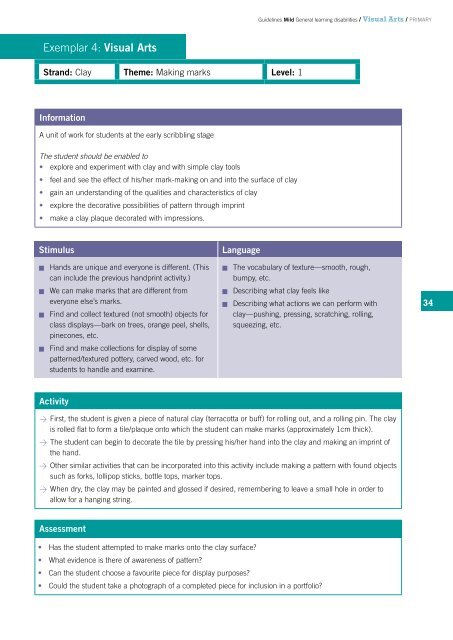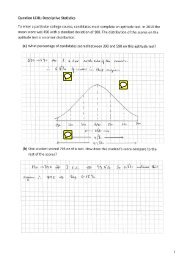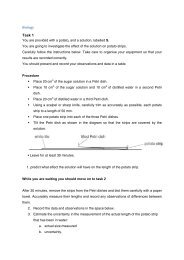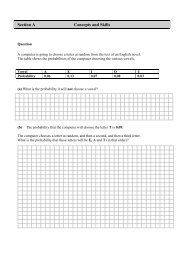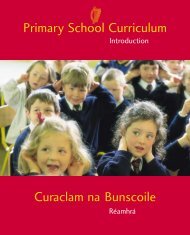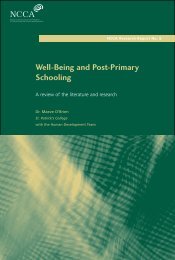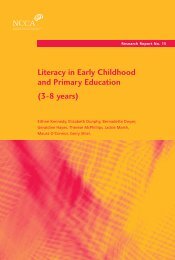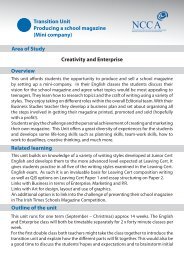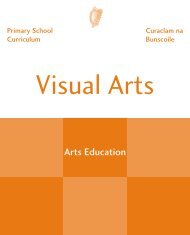Visual Arts - NCCA
Visual Arts - NCCA
Visual Arts - NCCA
You also want an ePaper? Increase the reach of your titles
YUMPU automatically turns print PDFs into web optimized ePapers that Google loves.
Strand: Clay Theme: Making marks Level: 1<br />
Information<br />
A unit of work for students at the early scribbling stage<br />
The student should be enabled to<br />
• explore and experiment with clay and with simple clay tools<br />
•<br />
•<br />
•<br />
•<br />
feel and see the effect of his/her mark-making on and into the surface of clay<br />
gain an understanding of the qualities and characteristics of clay<br />
explore the decorative possibilities of pattern through imprint<br />
make a clay plaque decorated with impressions.<br />
Stimulus Language<br />
n<br />
n<br />
n<br />
n<br />
Hands are unique and everyone is different. (This<br />
can include the previous handprint activity.)<br />
We can make marks that are different from<br />
everyone else’s marks.<br />
Find and collect textured (not smooth) objects for<br />
class displays—bark on trees, orange peel, shells,<br />
pinecones, etc.<br />
Find and make collections for display of some<br />
patterned/textured pottery, carved wood, etc. for<br />
students to handle and examine.<br />
Activity<br />
><br />
><br />
><br />
><br />
n<br />
n<br />
n<br />
Guidelines Mild General learning disabilities / <strong>Visual</strong> <strong>Arts</strong> / PRIMARY<br />
The vocabulary of texture—smooth, rough,<br />
bumpy, etc.<br />
Describing what clay feels like<br />
Describing what actions we can perform with<br />
clay—pushing, pressing, scratching, rolling,<br />
squeezing, etc.<br />
First, the student is given a piece of natural clay (terracotta or buff) for rolling out, and a rolling pin. The clay<br />
is rolled flat to form a tile/plaque onto which the student can make marks (approximately 1cm thick).<br />
The student can begin to decorate the tile by pressing his/her hand into the clay and making an imprint of<br />
the hand.<br />
Other similar activities that can be incorporated into this activity include making a pattern with found objects<br />
such as forks, lollipop sticks, bottle tops, marker tops.<br />
When dry, the clay may be painted and glossed if desired, remembering to leave a small hole in order to<br />
allow for a hanging string.<br />
Assessment<br />
•<br />
•<br />
•<br />
•<br />
Exemplar 4: <strong>Visual</strong> <strong>Arts</strong><br />
Has the student attempted to make marks onto the clay surface?<br />
What evidence is there of awareness of pattern?<br />
Can the student choose a favourite piece for display purposes?<br />
Could the student take a photograph of a completed piece for inclusion in a portfolio?


